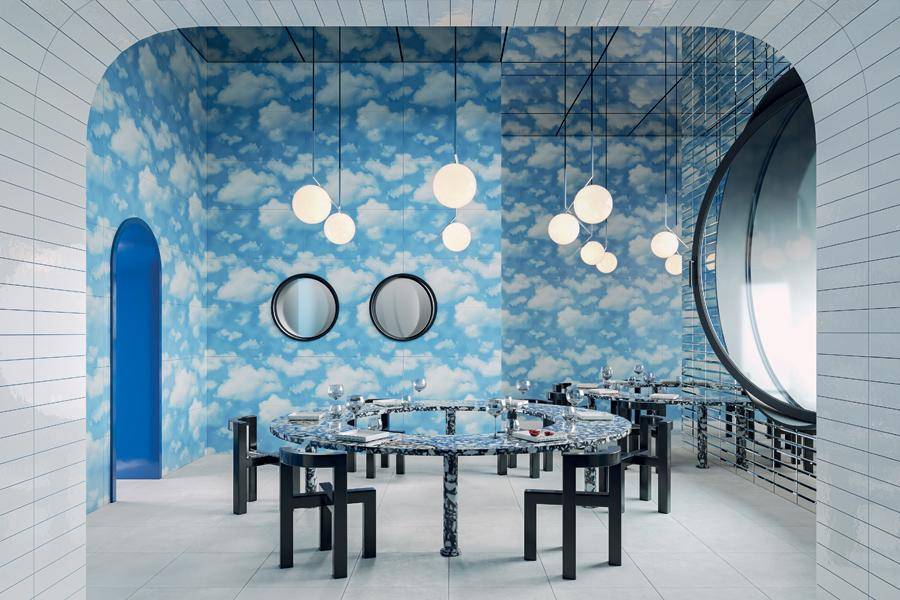Italy is commonly regarded as one of the global centres of tiling design and production. This month, TSJ spoke with Italy’s national association for ceramics, Confindustria Ceramica, to find out what makes the nation’s tiles so popular.
Please could you provide a short history of tile manufacturing in Italy?
Italian ceramics have a long history, dating back to Roman times when they were used for drinking gourds and lining the floors of ancient villas. Since then, the material has become an incredibly sophisticated and versatile hard-surfacing solution produced on a commercial scale that can be used on floors, walls, facades, countertops, furnishings, and more. For over 40 years, Italian manufacturers under the Ceramics of Italy banner have revolutionized the ceramics industry, pushing the boundaries of generations of craftsmanship and creativity with modern technological advancements and performance standards to create surfacing materials that are truly one-of-a-kind.
What makes Italian tiles distinct?
There is a noticeable difference in quality and aesthetics when looking at an Italian ceramic product versus others. Produced at a higher temperature than competing tile products, Italian porcelain possesses an uncompromising strength. This has made it a top choice for use in high-traffic areas, where it will not fade under the daily wear and tear of its environment. In addition, Italian tiles are also known for their beauty. Italian manufacturers are constantly pushing the creative boundaries when it comes to design, producing stunning collections in a wide variety of colours and styles not yet explored in ceramic.
Also, Italian manufacturers are trailblazers in technological innovation. They have gone above and beyond in digital printing techniques to create tile products showcasing hyper-realistic renditions of the elements to uncanny ceramic wallpaper effects. And for marble and stone, Italian manufacturers have delved fully into innovative through-body veining techniques, where coloured raw ceramic materials are deposited throughout the entire thickness of the tile using a controlled sedimentation process.
What design trends are you predicting in Italian tile manufacturing over the next twelve months?
Naturalistic will continue to be a macro trend in tile design throughout the year. Because nature has the power to reduce 4 stress, improve cognitive function, and enhance mood and creativity, Italian tile manufacturers have been looking to it as a source of inspiration for their collections. These increasingly feature natural material looks, like stone, wood, and marble, that feature authentic veins, grooves, and depressions – just like the real material. Natural color palettes, including warm, neutral tones and earthy, green hues, and biophilic-inspired wallpaper and decor looks will also be very popular.
What are the most significant challenges to the Italian tile manufacturing industry currently?
The widespread increase in energy costs, coupled with the increase in logistical costs, was the greatest challenge the Italian tile industry faced in 2022, and continues to face today.
How is the Italian tile sector promoting sustainability in manufacturing?
For years, Italian ceramic manufacturers have kept sustainability top of mind when it comes to their production methods, implementing rigorous measures – such as reusing and recycling 100% of waste products in production – to reduce the consumption of natural resources and thereby minimize their environmental impact. Further, the industry introduced a new ISO standard, which is the first international standard certifying the sustainability of ceramic tiles.
Additionally, to shine a light on and further amplify these sustainable efforts in Italian ceramic production, Confindustria Ceramica (the Italian Association of Ceramics) launched the campaign, “Ceramics of Italy for Sustainability.” The new initiative comprises a stunning artistic video and detailed resources page with information on the industry’s sustainable production practices and eco-friendly attributes of Italian ceramic tile.
Are there any case studies of projects using Italian tiles that showcase their quality and aesthetic appeal?
Of course! Quality and aesthetic value are two main attributes of Italian tile that make it such a frequently chosen surfacing option for projects, in both the commercial and residential sectors. The inherent durability and beauty of Italian tiles were two contributing factors to its selection as a surfacing choice by GH+A Design Studio when designing American Dream, a 3.2 million square ft contemporary state-of-the-art retail, entertainment, and food destination located in the New York metropolitan area. The team used marble-look black and white porcelain tiles, arranged in a plethora of deco patterns and matte and glossy finishes, all accentuated by dramatic lighting. This gave the massive space a consistent, elegant aesthetic, while also providing a hard-wearing surface able to withstand the high-traffic environment.
On the residential side, DI Group used an extensive amount of Italian tile in a series of new, high-end spec homes in LA. Due to the extreme versatility of porcelain tile and the wide variety of styles available from Italian manufacturers, the team ended up using thousands of square feet of stunning Italian tiles to surface the interior and exterior floors, interior walls, external cladding, bars, fireplaces, kitchen islands, countertops, and more.
www.confindustriaceramica.it









